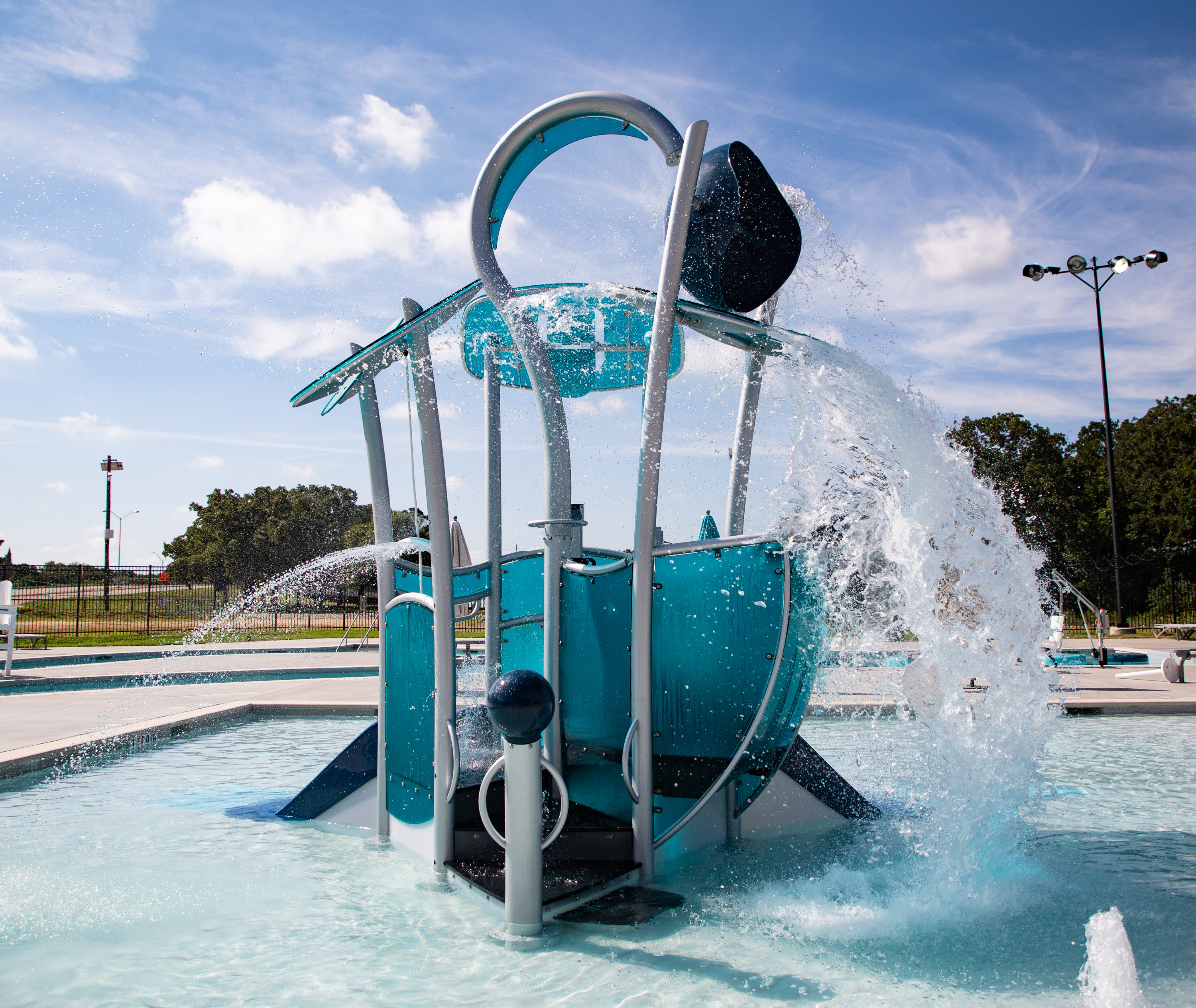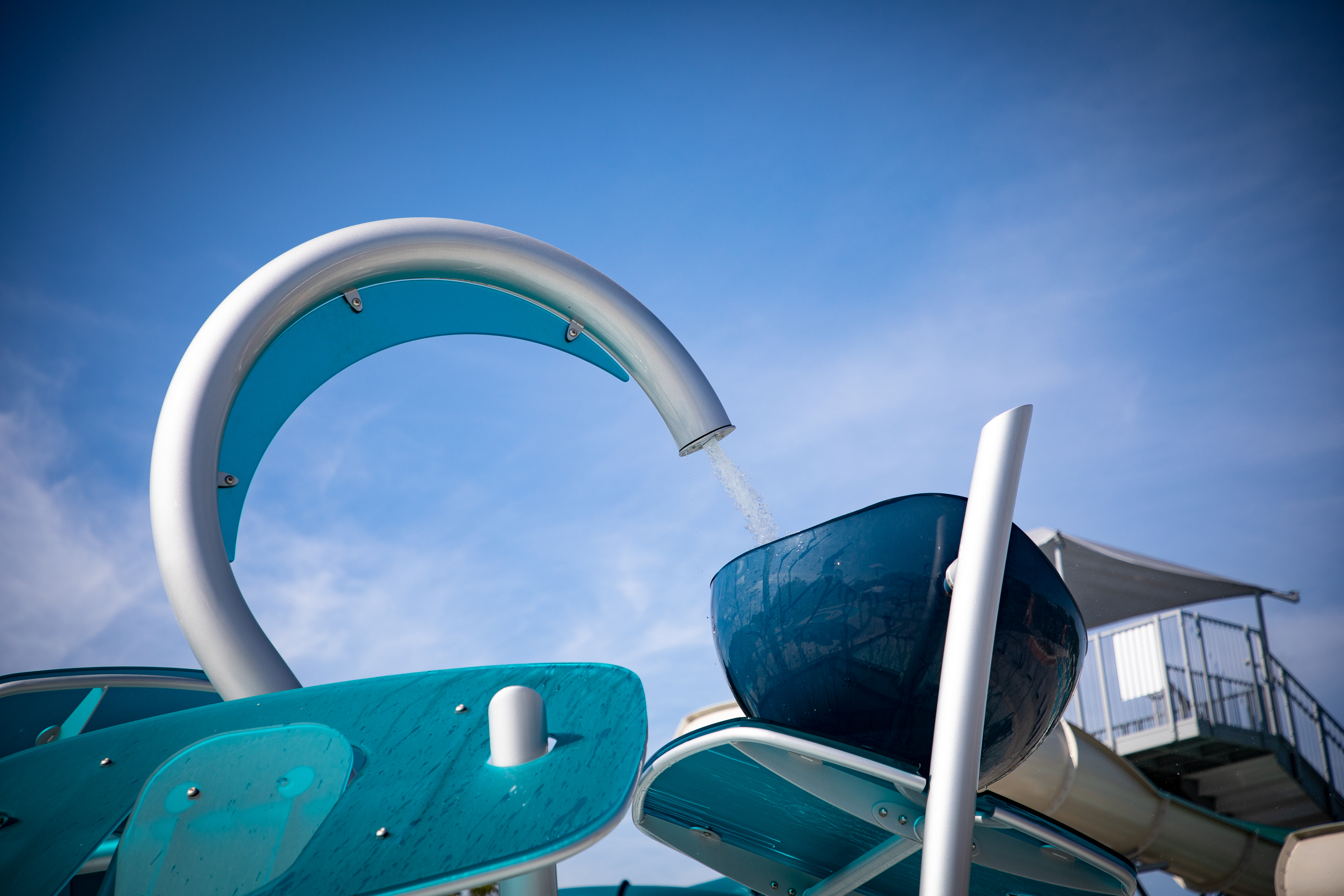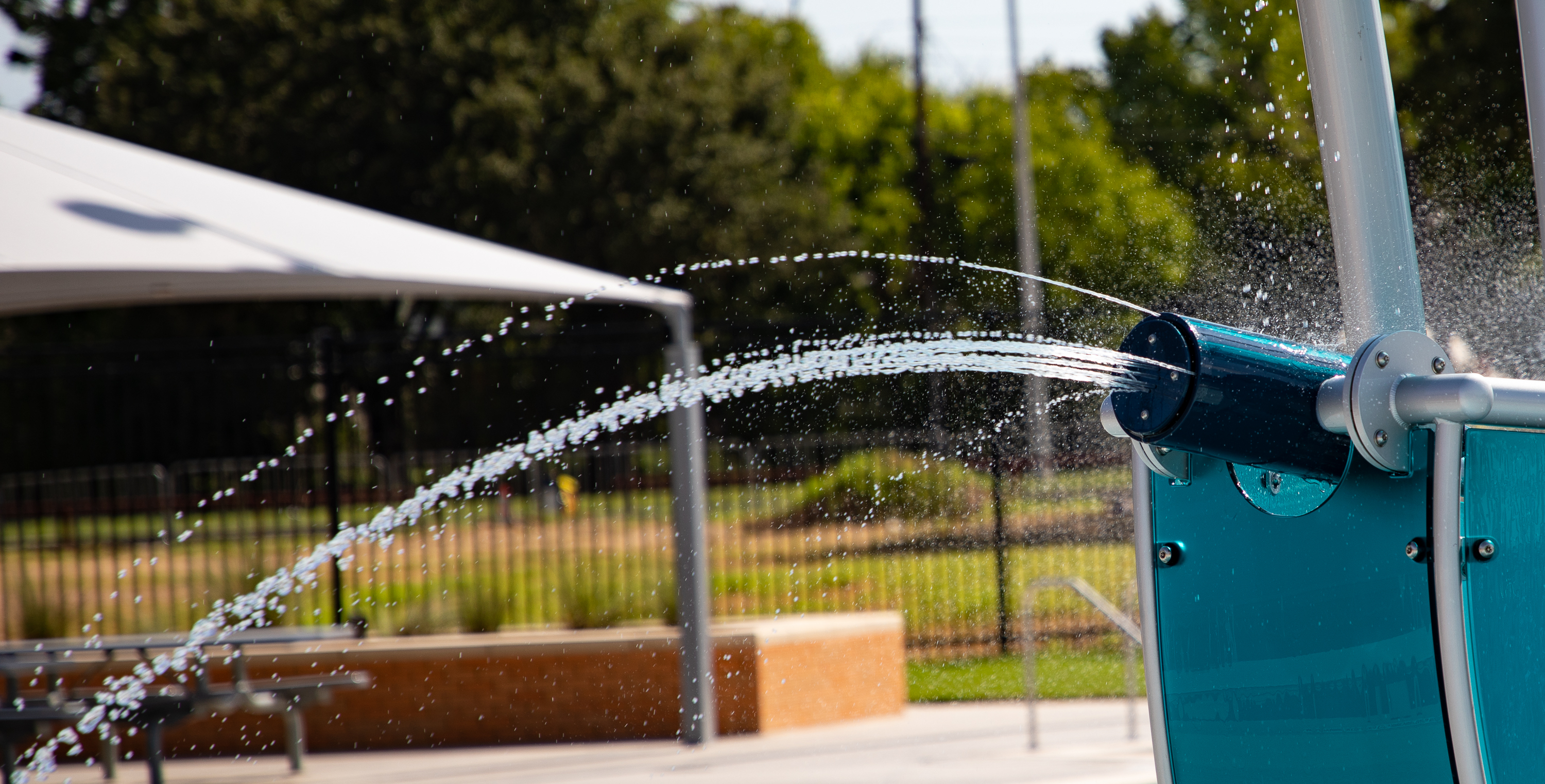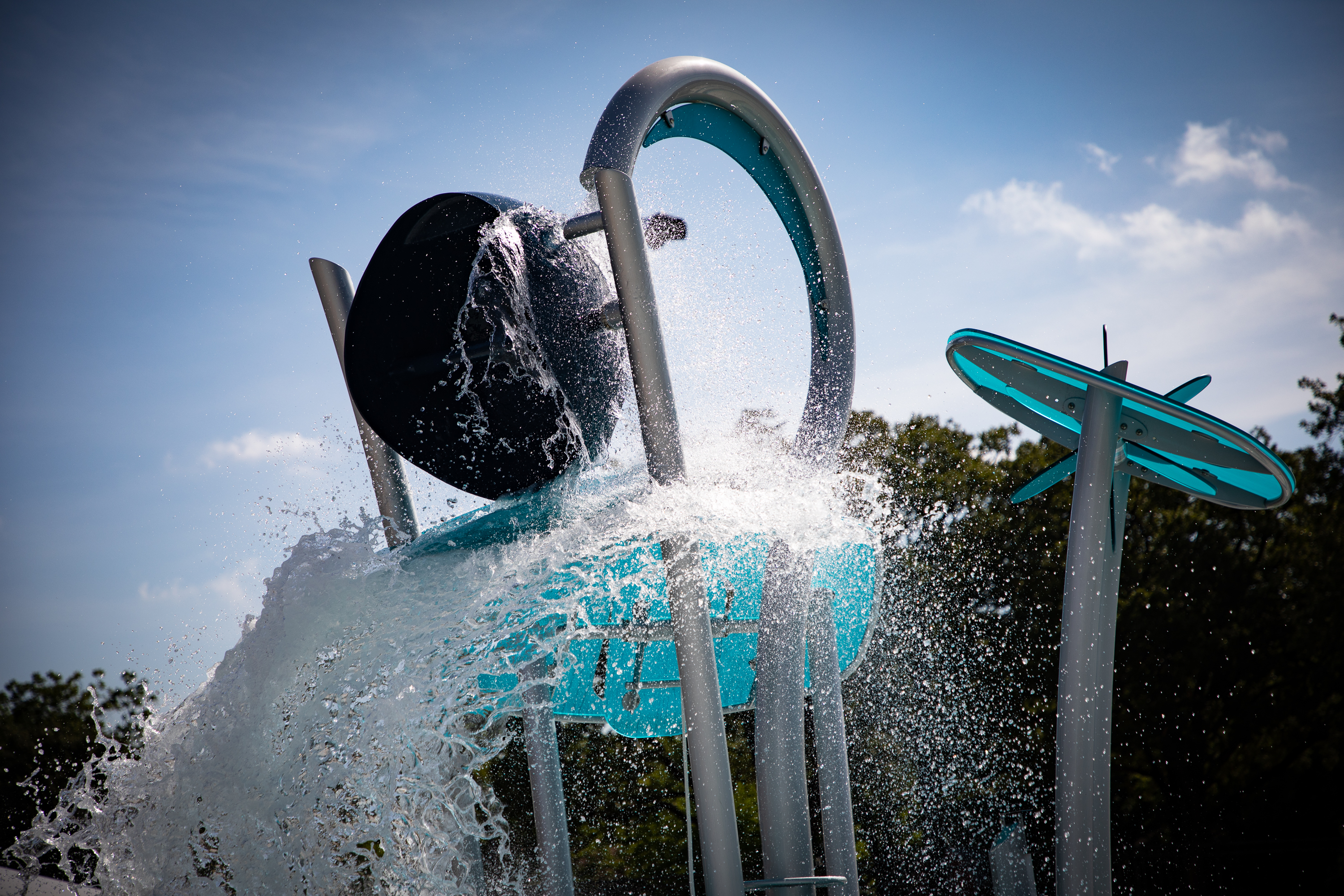
Splash pads are a great way to make aquatic play accessible. Even though splash pads may be accessible to those with differing abilities, this does not make them fully inclusive inherently. Designing bigger and more exciting splash pads does not necessarily make a splash pad more inclusive. In fact, bigger and more exciting often adds barriers for some individuals. Designing for inclusion requires extra consideration in the design process, but typically very little consideration for extra budget or maintenance.

Splash pads should be designed as an aquatic play environment comprised of features that maximize the sensory and cognitive stimulation for children of all physical and mental abilities and is designed to encourage all children to play together and with the same features. Play features that are wheelchair height accessible and adequate turn-around space between elements are important aspects to consider in design. Other considerations should be made for how children with autism or other sensory differences may approach such a space: is there a balance between intense and more gentle water play? How will the various sounds and sights affect those playing in this space?

From the design of the splash pad feature, to the methods of accessing the site, be conscious of barriers to access and address them early in the design process. For instance, assure that there are adequate handicapped parking spaces and that the path from parking to the splash pad location does not contain any obstacles.

All splash pads should be developed utilizing a rule of thumb for one child every 25 square feet of active water spray. Splash pads are an excellent opportunity for park agencies to develop safe play areas that encourage people of differing ages and abilities to experience water play.
To learn more about Splash Pad products, visit the Aquatix website.
